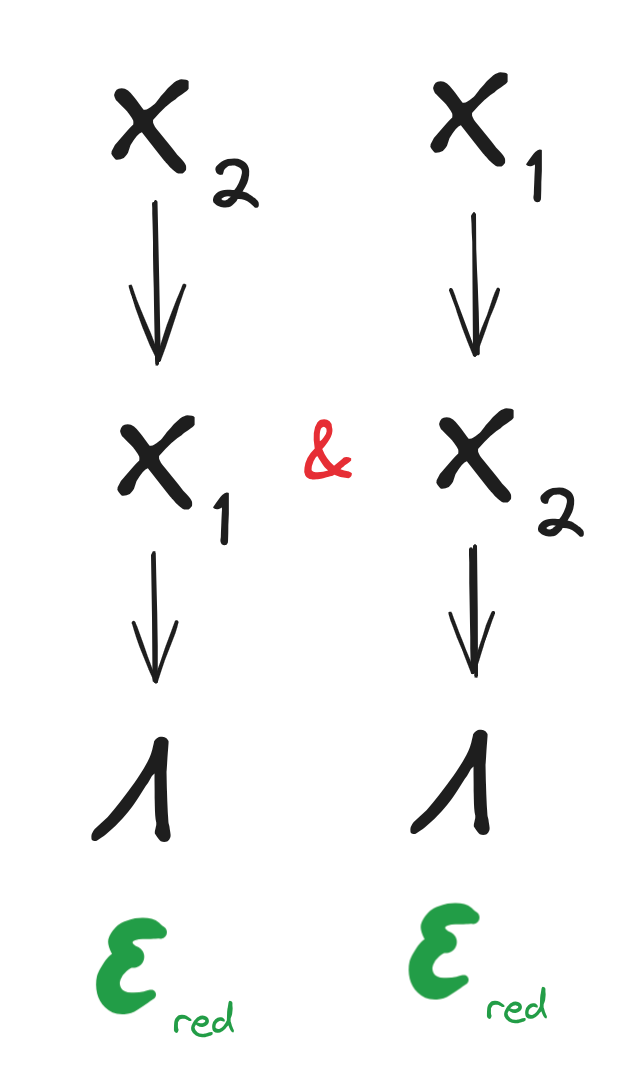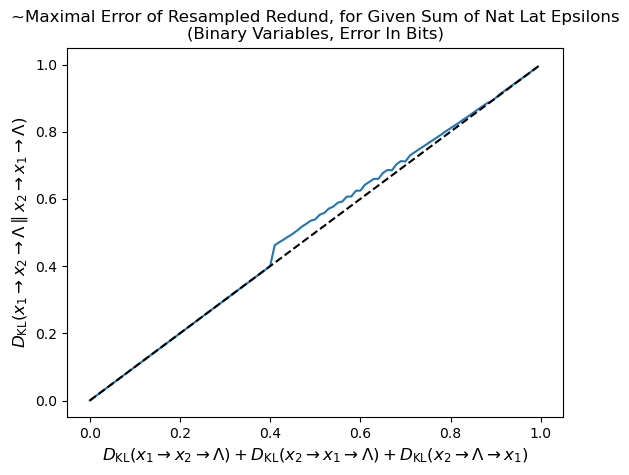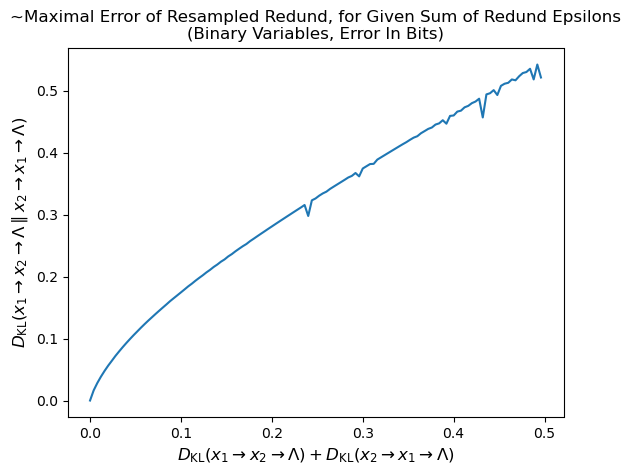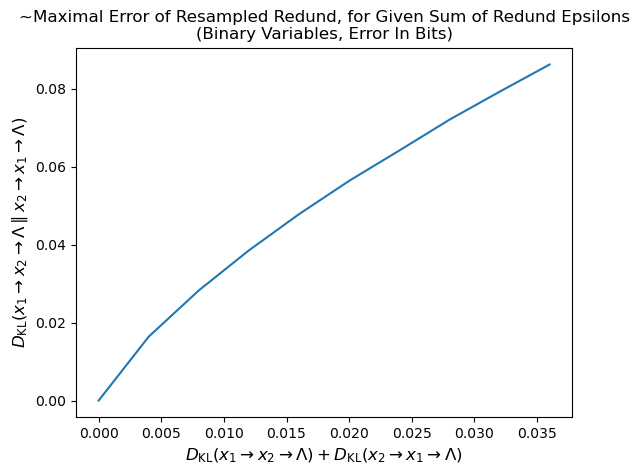“Resampling Conserves Redundancy (Approximately)” by johnswentworth, David Lorell
- Author
- LessWrong ([email protected])
- Published
- Fri 22 Aug 2025
- Episode Link
- https://www.lesswrong.com/posts/cpxxfagD92ivLZCp4/resampling-conserves-redundancy-approximately
Audio note: this article contains 182 uses of latex notation, so the narration may be difficult to follow. There's a link to the original text in the episode description.
Suppose random variables <span>_X_1_</span> and <span>_X_2_</span> contain approximately the same information about a third random variable <span>_Lambda_</span>, i.e. both of the following diagrams are satisfied to within approximation <span>_epsilon_</span>:
"Red" for redundancyWe call <span>_Lambda_</span> a "redund" over <span>_X_1, X_2_</span>, since conceptually, any information <span>_Lambda_</span> contains about <span>_X_</span> must be redundantly represented in both <span>_X_1_</span> and <span>_X_2_</span> (to within approximation).
Here's an intuitive claim which is surprisingly tricky to prove: suppose we construct a new variable Lambda' by sampling from <span>_P[Lambda|X_2]_</span>, so the new joint distribution is
<span>_P[X_1 = x_1, X_2 = x_2, Lambda' = lambda'] = P[X_1 = x_1, X_2 = x_2]P[Lambda = lambda' | X_2 = x_2]_</span>
By construction, this "resampled" variable satisfies one of the [...]
---
Outline:
(02:07) Notation
(02:27) Proof
(03:36) Step 1: Scaling Down The Errors
(05:37) Step 2: Second Order Approximation
(05:42) Validity
(06:40) Expansion
(07:36) Step 3: Good Ol Euclidean Geometry
(07:59) Jensen
(09:12) Euclidean Distances
(10:11) Empirical Results and Room for Improvement
The original text contained 2 footnotes which were omitted from this narration.
---
First published:
August 21st, 2025
Source:
https://www.lesswrong.com/posts/cpxxfagD92ivLZCp4/resampling-conserves-redundancy-approximately
---
Narrated by TYPE III AUDIO.
---
Images from the article:




Apple Podcasts and Spotify do not show images in the episode description. Try Pocket Casts, or another podcast app.
